Product Page is your product page, whether in e-commerce or on an institutional website; see tips on how to optimize it
In an optimization strategy aimed at e-commerces or websites that present products, Product Page SEO is a technique that consists of creating — or selecting — a particular product page and giving it the objective of bringing more organic traffic, better experience to the user and conversion rate.
In other words, a Product Page SEO is a product page that is 100% optimized for capturing clicks on search engines, paying special attention to aspects such as snippet optimization, content, UX and other elements.
These pages, when well used, have great organic potential and can be responsible for a high gain of qualified traffic to a sales site in a winning SEO strategy.
How to choose my Product Page SEO?
To decide what your SEO Product Page will be, think about products that have great attraction potential or that represent your business goals well.
Using the Pareto principle can be a good tip: look, among the 20% of products that bring in 80% of your revenue, which ones stand out the most and have the highest organic demand.
When finding the products that convert the most organically, select those that strategically have the most popularity among your audience and the greatest potential for optimization and improvement.
If you want to create a Product Page SEO from scratch, do some intent research, identify some pain in your audience and solve it.
From this page, the user can be directed to other pages, increasing the retention rate of this site, and increasing the chances of the consumer considering the purchase of an airline ticket.
How to optimize a Product Page SEO?
If, now that you know what SEO Product Pages are, you already have some ideas on how to implement this strategy in your e-commerce and you already imagine which products you can use for this, let’s go to practical tips on how to make a simple product into a super source of organic traffic for your business .
First, of course, you need a Product Page SEO: whether choosing one from your product catalog or creating a specific product for that purpose, it’s important that this page already contains all the basic attributes of a product page.
Another extremely fundamental point when applying this strategy is to understand that this page should not be seen in isolation from the rest of the site, but as part of a whole, since it is still part of the architecture of this site .
It’s a common mistake for Product Pages SEO to be seen as a standout center from the rest of the site, but you have to remember: Google looks at your site as a whole, as well as your user .
Therefore, there is no point in having a perfect SEO Product Page and a poorly organized information architecture, for example.
Applying this strategy to sites that are not technically optimized or have some kind of obstacle in achieving good SERP placements can have the opposite effect than expected.
Therefore, we will list, below, 14 practical tips on how to optimize it in the smallest details to obtain the best possible results.
Let’s go!
1. Align the product name with your keyword
When naming products on a page, it can be tempting to include as many keywords as possible in this space.
Brand name, product name, size, color, category, anything that can specify this item as accurately as possible and accurately describe it on Google results pages.
But that, however, is not the best thing to do. When we talk about product names, it’s important to remember that this page should not organically compete with its own category pages.
To prevent this traffic from cannibalizing, define a naming structure that focuses only on searches made by the product , and not necessarily by the product + brand and/or category.
Check out the example below:
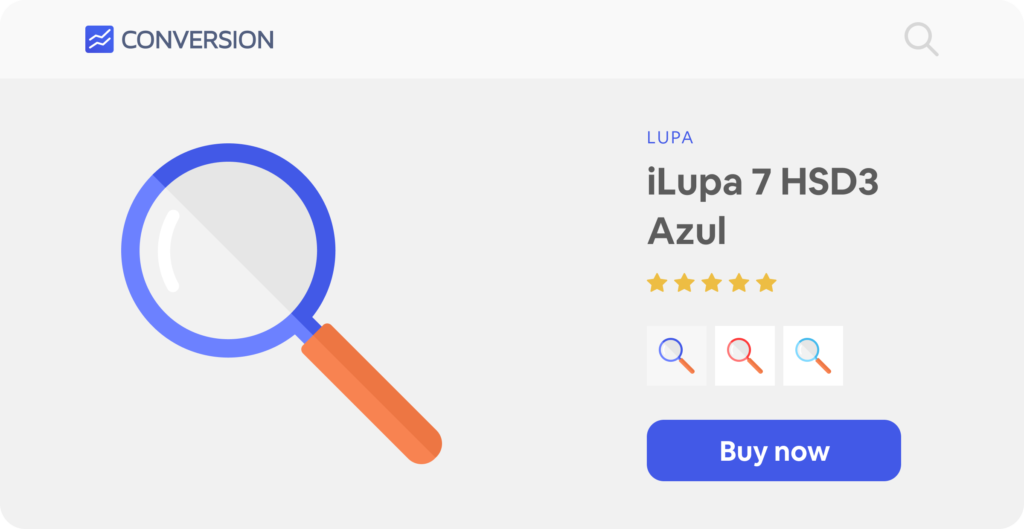
Note that the product iLupa 7 HSD3 Azul , from the Conversion store , is already included in the LUPA category , which eliminates the need to include these keywords in the name of this product.
To achieve as many search intents as possible, keywords that include brand ( ilupa 7 ) + product model ( hsd3 ) + feature (azul`) are enough to specify this product accurately.
For best use, do not only include this name in the product name, but also in the meta description of this page and in its URL. In this way, all meta information needed by the search engine will be complete and detailed.
2. You need a Good URL
In other words, having a good URL is having a URL that is descriptive and consistent with your page .
But first, let’s remember what a good URL is made of:
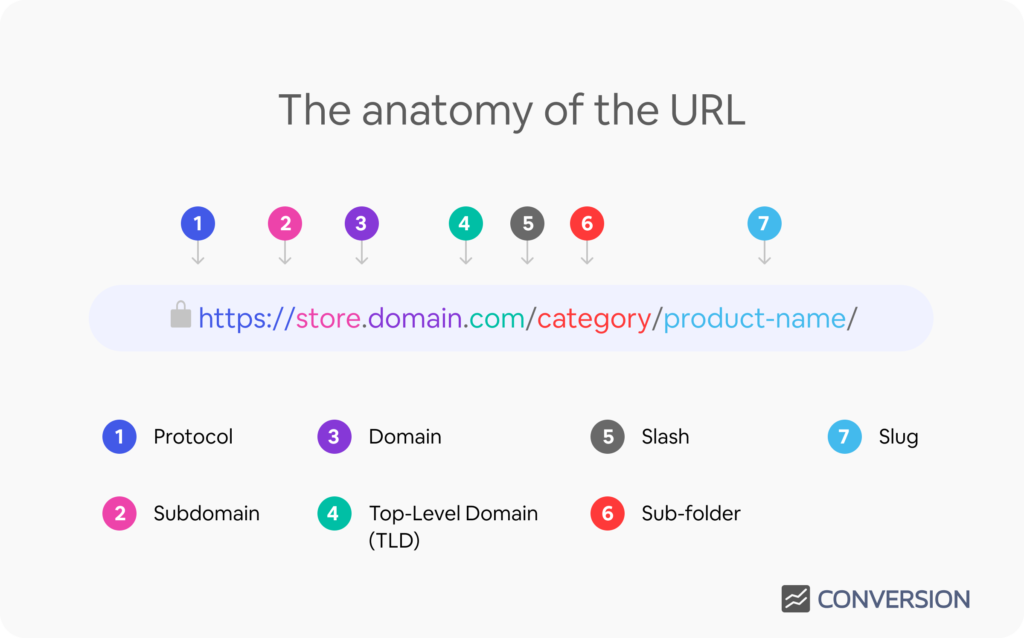
Now, as stated in the topic above, it is important that the slug of your URL is composed of the keyword that is being worked on it, that is, the name of the product .
Before it, category and subcategory descriptions must also be specified.
In this case, the iLupa 7 HSD3 Blue product URL should be:
https :// www . conversionstore . com .br/ilupa-7-hsd3-azul/
It is worth mentioning that it is not an absolute rule as the URL should be; in general, it will be limited by the platform itself, but our suggestion is that the URLs are as short and elegant as possible.
3. Create good titles and meta tags
Recently, Google released an update focused on titles visible to users in the SERP.
This update, called the Google Title Tag Update, aims to improve titles considered inappropriate by the search engine — that is, improve the user experience by displaying titles more consistent with the content displayed on the pages.
Not only does this mean that the world’s largest search engine values its snippet titles more than we thought, but also that it is willing to go out of its way to modify them if it thinks they could be better!
This gives us an extra responsibility when thinking about this optimization aspect, so choosing a good title should be a priority in your strategy.
In general, we recommend that this title have the product name + the brand name + category , be between 30 and 60 characters and be as direct as possible. The order should also be what people are looking for the most, and for that, good keyword research is important .
In the case of the product we are using as an example, the title Lupa iLupa 7 HSD3 Azul | Conversion would be a great choice! Don’t treat this as an absolute rule, however: it should always be elegant and make sense to the user.
It is important that all your product titles are developed manually, but in the case of large e-commerces, this can become an unfeasible effort due to the thousands of existing pages.
In this case, when using an automation template, select the attributes product name + store name for standardization.

But it’s not just titles that matter within the SERP. They work in conjunction with another descriptive element of equal importance: the meta description . It is worth mentioning that it is not a positioning criterion directly, but it can influence the click and increase the CTR.
The principles are the same here — use the most descriptive keywords possible, be direct and always include the product name + current price offer (remember the store name is already in the title and URL ).
In the case of automatic generation, create a small text, between 70 and 155 characters, that has these two elements inserted in a context that makes sense.
In the case of our example product, we could think of:
Do a lot more with a lot less with [product name]! Buy now for [product price], pay by credit card and get a discount on debit!
4. Organize and make good heading tags
SEO Heading tags on a website may seem, at first, to be a secondary optimization factor, but it is important to remember that they are what hierarchize the information on a page for search engine crawlers — and for users too!
H1 is the most important information on a page, so we recommend that the product name occupy this position. A big mistake is using the site name as H1: don’t do that!
So, in descriptive terms, the H2 becomes the most important information below the title (product name), and it should represent important sections of the page, such as:
- Product description
- Common questions
- Technical specifications
- Reviews
- Comments
- Support texts, etc.
5. Use product attributes for good internal linking
When it’s time to be as specific as possible when describing your products, think about all the information a user would like to have about a particular item when buying it in a physical store.
In the absence of someone to take the place of a salesperson, one-page descriptions must fulfill this role and leave no doubt about what attributes a product has. If you have a physical store, even better: interview a salesperson and create a fluid experience between what you see on the website and what you hear in the store; we call this omnichannel content .
And, by including so much information within a page, why not use it to improve your site’s internal linking ?
Organize the information so that each of them can be linked to another page on your site, such as the brand name on the site’s home page; the product category to this category page; etc.
See, below, a good example of internal linking using the attributes of a product, which in this case is a wine:
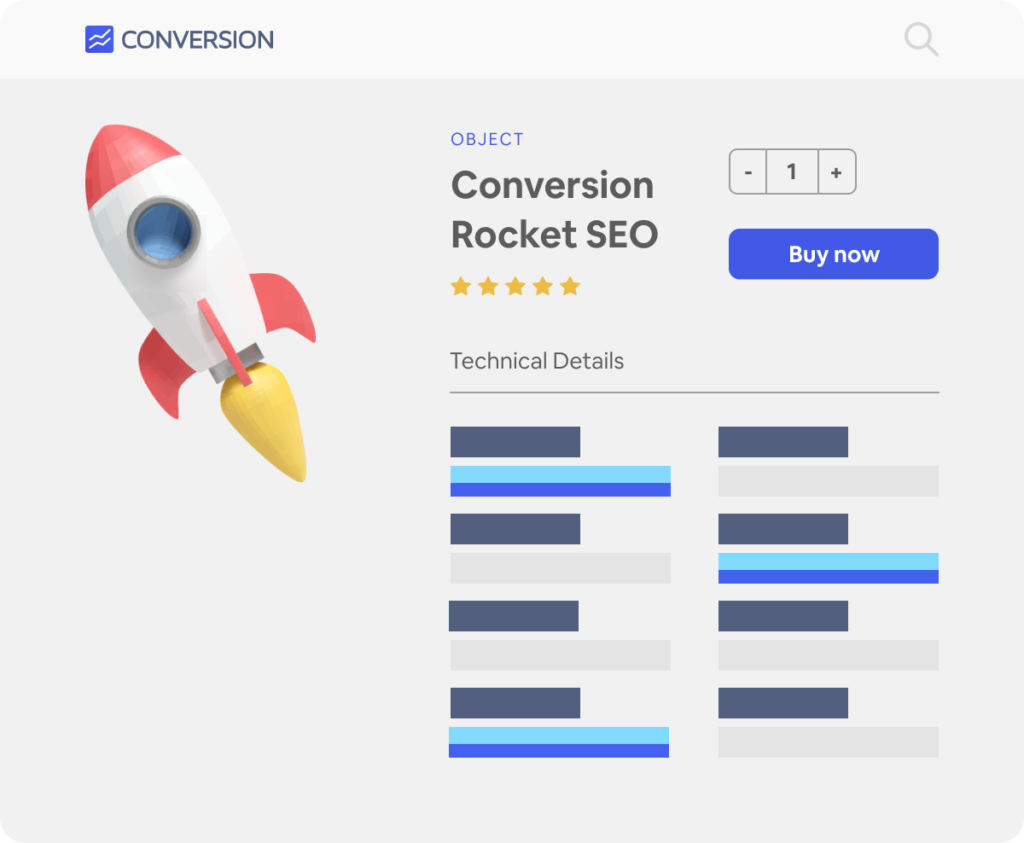
In the image above, we illustrate how certain attributes of a datasheet could point to new pages, such as filters, categories, departments, characteristics, etc. Take care that these are indeed good pages for search intent .
6. Write descriptions that engage
Still about the descriptions, it’s not just the technical specifications and their presentation that matter when writing about your product.
It is important to remember, first of all, that the description of a product must sell it in the best possible way, so this must be persuasive content and touch the pain of your potential customer.
To help your user choose the purchase and convince them that your product is the best, reflect and insert the following answers in your description:
- What is this product used for?
- What problems does it solve?
- How can I insert it into my practical life?
- What is the way to use it or in what ways can I make the most of it?
- Why should I buy this product and not a similar one?
- How will this product impact my life and make it simpler?
- What are the most common questions?
- Is he the only solution to this problem? What other products are related to this one?
The presentation of this content also counts, since a professional design conveys more confidence to the consumer. Below is a great example of an aesthetically well-crafted product description:
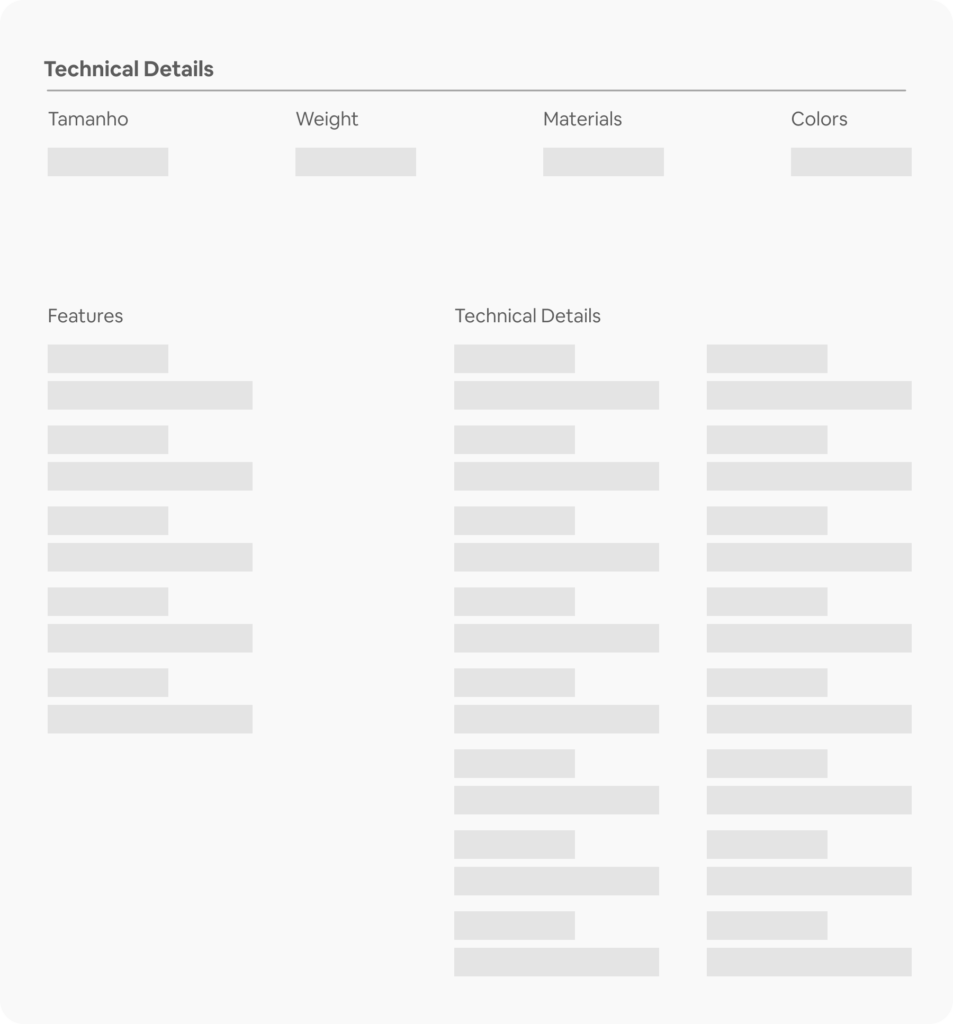
7. Use high quality images
Nothing worse than trying to see more accurately the details of a product online and the exposed images having a low resolution, right?
When not being able to touch a product, highly detailed images are all that bring the user closer to the item they want to buy. This point is especially important for the fashion industry.
When including photos of your product, try to include photos of impeccable quality and that show as much of the product’s details as possible, including how it looks internally and seen from different angles.
If possible, also include a video showing this product in use. In the case of an e-commerce that sells clothes, the video is important to show the fit of the piece on the model that uses it — and don’t forget, of course, to include the measurements of this model!
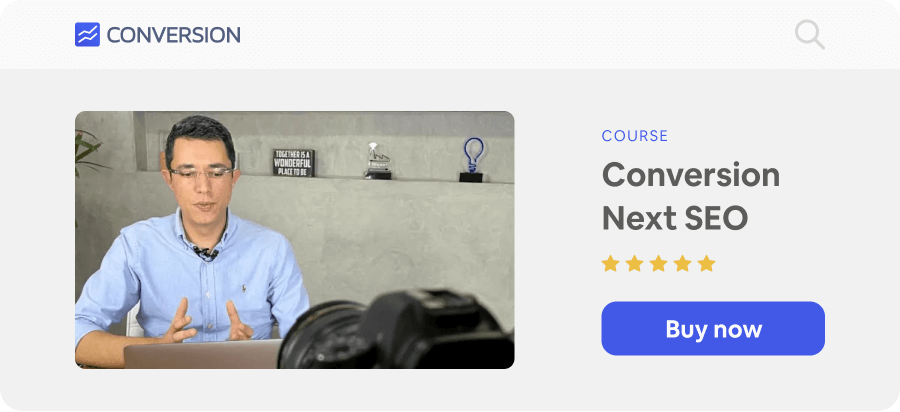
Photos have an important effect on the consumer’s mind, who can imagine himself within that context using that product, leading him to make this acquisition more real and more attractive because it becomes palpable in his imagination.
When selecting images, however, you must take certain precautions so that they are not too heavy or hamper the performance of your site, lowering your loading speed, for example.
To prevent this from happening, use lighter formats, such as the new WebP , and reduce its weight as much as possible without losing quality. In some cases, SVG can be a great idea.
For more Image SEO tips , visit our guide on the subject.
8. Make good breadcrumbs
Breadcrumbs are key pieces within a page because they not only help the search engine understand the architecture of a site, but also place the user within that structure.
When clickable, they also serve as support for the user who wants to return to a category page or to a previous step within a purchase journey.
To create a good breadcrumb, keep in mind who the parent categories and child categories are, getting to a product page without skipping any steps.
In the case of our example product, it falls into at least three categories: hiking , Hiking backpacks and hiking backpacks for women , so all of them must be listed in this breacrumb.
Here’s what your structure would look like:
Home > Glasses > Magnifier > iGlasses 7 HSD3 Blue
Tip : Use structured data to tag your breadcrumb and include it in your Google snippet, right next to the URL. This will make you richer and also better position the user about what position that page occupies within your site:

9. Include good product choices in the “Related Products” section
If you are used to shopping online, you have certainly been in the situation of viewing a product and, minutes later, being on another, then another, then another…
Some players are experts at this. Mercado Livre, for example, has one of the highest retention rates on the internet, and one of the factors is because it is a great expert in suggesting good products in its “Related Products” section.
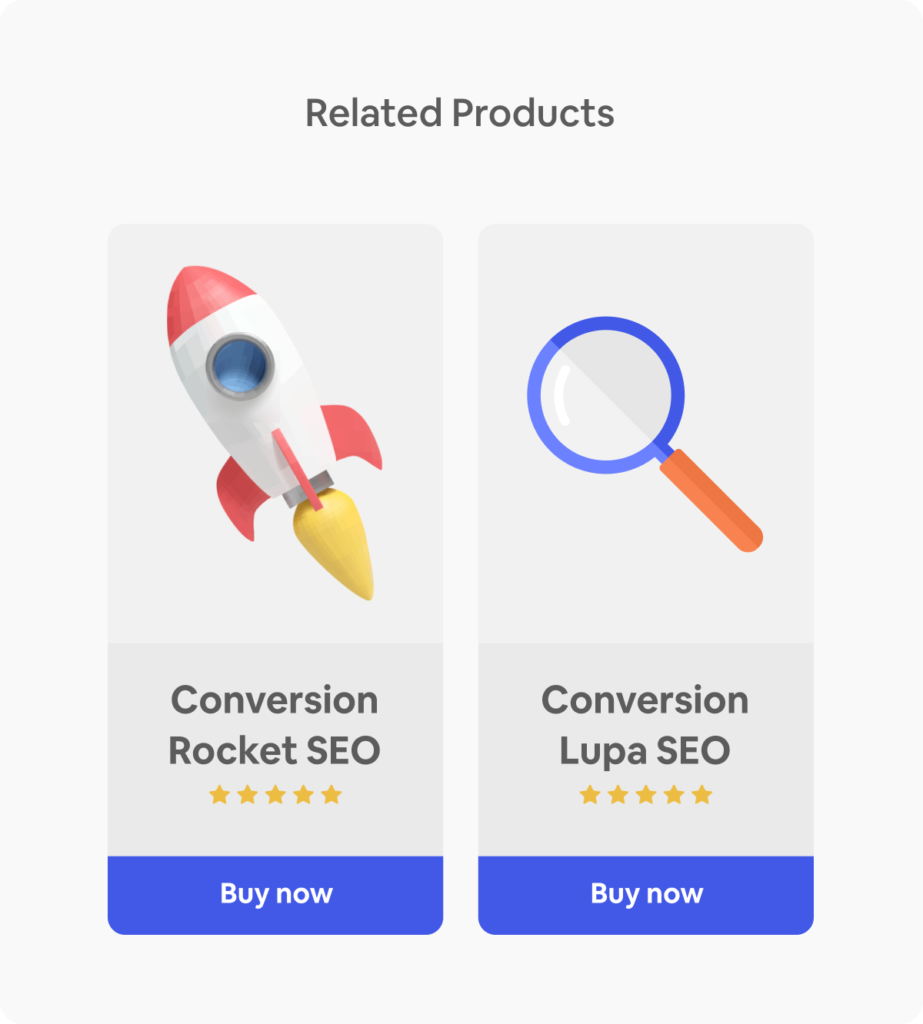
Enhancing this product offering can still be a good way to improve your site’s internal linking.
10. Apply structured review markup
According to data from Conversion’s Digital Consumer Survey , referrals from friends and reviews from other consumers are the two main influencing factors when convincing a consumer to buy a product from a particular brand.
So, be sure to highlight your consumer reviews within your product page.
And not just her! Also take that highlight to SERP.
With structured data tags specific to reviews, these ratings can become another value attribute in your snippet, bringing the “stars” to your user before they even access your site.
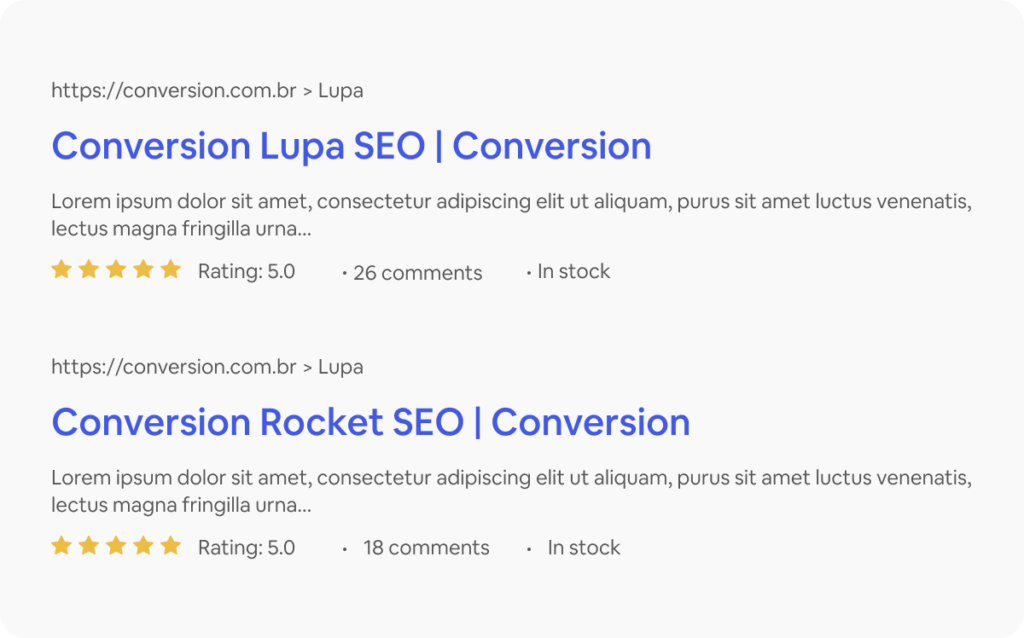
To see if your tags are working correctly, always test them in the Google Rich Search Test .
11. Include a FAQ on your site and use tags
In the same vein as reviews, a question and answer session can also lead users to answer their last questions before buying a product.
Imagine that, as we said a few lines above, these questions can take the place of a physical seller and lead your user to the answers he seeks about your product.
These questions can even reach him even before the click: with the right tags, you can also increase your snippet in the SERP with these questions and answers.

Understand how to implement FAQPages .
12. Include your product pages in your Sitemap.xml
When we update our website or publish new products, we expect Google to index them as quickly as possible.
Of course, indexing will occur if there is no technical impediment, but there are a few ways to make it happen faster, including these pages in your sitemap.xml file is one of them.
To further assist the Google robot in reading your site, you can create different sitemaps for different types of content.
For example: one sitemap for category pages, another for blog and its posts, another for product pages, and so on.
Don’t forget, however, that the maximum number of pages per sitemap must be 50,000 and that you must submit them in Google Search Console.
For the most important products, receiving a link from home will be even more powerful. For everyone else, use Sitemap.xml!
13. Prevent similar products from cannibalizing
Having many products that vary in their colors, sizes and other details can create a somewhat problematic situation within the architecture of an e-commerce: the mutual cannibalization of access to this product.
That’s because creating a page for each of these variations produces a lot of duplicate content, since all these products are fundamentally the same.
Making the decision to create a page for each variation, however, depends on a few important factors to consider.
The first one is whether there is a large enough search demand for this. The second is the workforce available to describe all these descriptions and titles manually.
If creating all these pages is really the best option for your store, you will need to choose a main page and canonicalize the rest of them.
That is, include the tag rel=”canonical” in all similar pages and point the main page as the original.
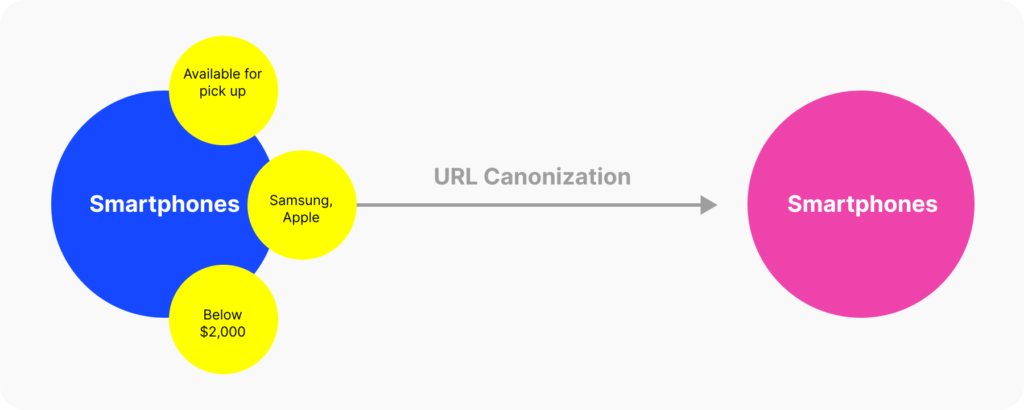
This will prevent these pages from fighting for the same positions in the results pages, as well as telling Google which of these pages should be indexed.
14. Enjoy discontinued products
When a product is discontinued, either because it is discontinued, because it is no longer distributed by your store or simply because it is out of stock, it is common for these pages to be taken down, forgotten or simply abandoned to the message of “Unavailable”, Is not it?
But the truth is that these products represent a great opportunity for e-commerces.
How many times have you not had a discontinued product as a gateway to an e-commerce? And how many times has this visit not generated interest in other products?
These pages, despite not being able to make a sale, still drive organic traffic to your site and have backlinks from other domains in addition to the internal links themselves.
If you want to take advantage of the qualified traffic that comes to your business through these pages, follow the tips below:
- Keep this page in your sitemap.xml file;
- Prevent users from being able to add the unavailable product to their cart and hide the old price;
- Show alternative products similar to the product that no longer exists;
- Remove the offer from your structured data tags to prevent Schema punishments;
- If there is any preview of the product becoming available again, make that prediction very visible to users. If possible, give them the option to be notified when this happens;
- Pause all media campaigns leading to that product;
- Include a button that takes the user to see other similar products that may be of interest to them, such as a “see available options” button, for example;
- Reuse these URLs in similar products (or even successors);
- If it makes strategic sense, 301 redirects to the most relevant product alternatives;
- Keep pages alive as long as they are useful.
Conclusion
Often ignored because they individually generate a lower volume of search and consequently of clicks, Product Page SEO is essential for more robust and in-depth SEO strategies. For its execution to be successful, the hybrid work model, where agency and client are responsible for executing the SEO, can work very well, since there is a lot of work.
Product pages can still be very important in niches where heading tags have a very low click-through rate. Currently, some niches can have very low CTR even for the most searched terms in the segment. This is because there is a greater distribution of clicks across all results on the page, apart from searches with zero clicks.
Finally, Product Pages bring extremely qualified traffic because they are at the bottom of the funnel. Who has never researched the model, name or even the internal code of a product, just to know the best offers?
Well, you are not alone. And, at this time, it is essential to be in the first place to win or not lose the sale.
